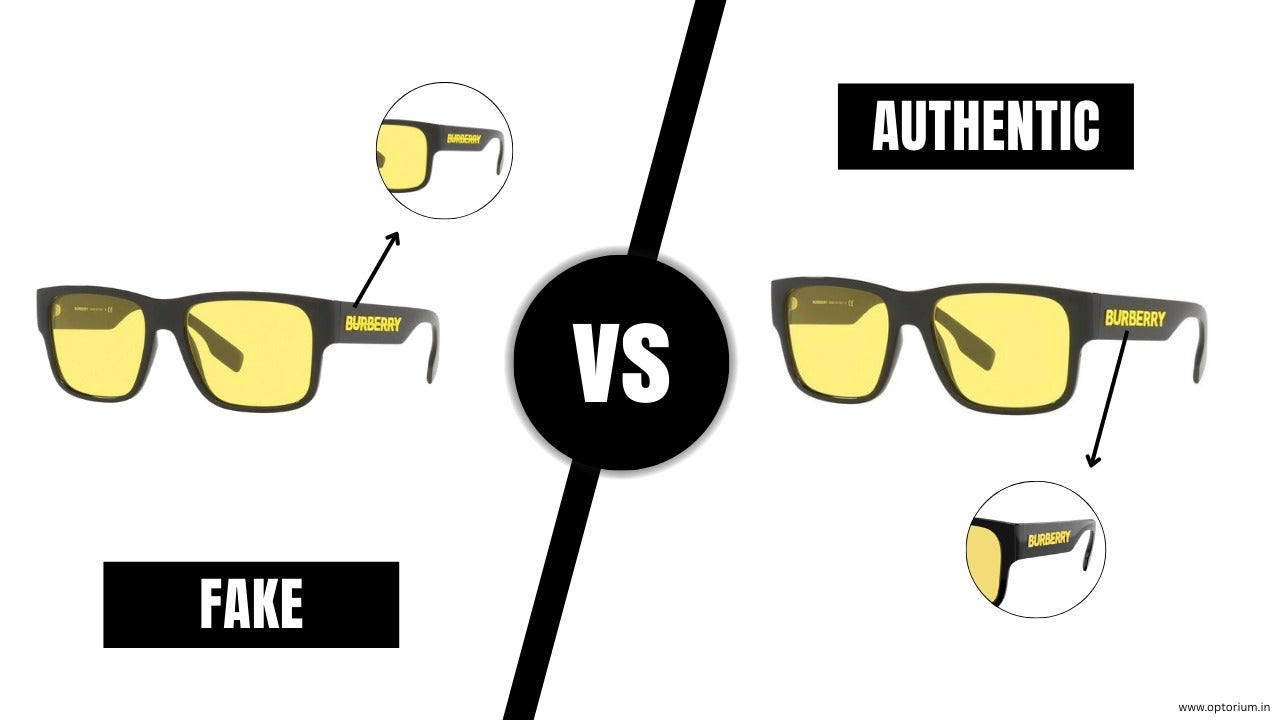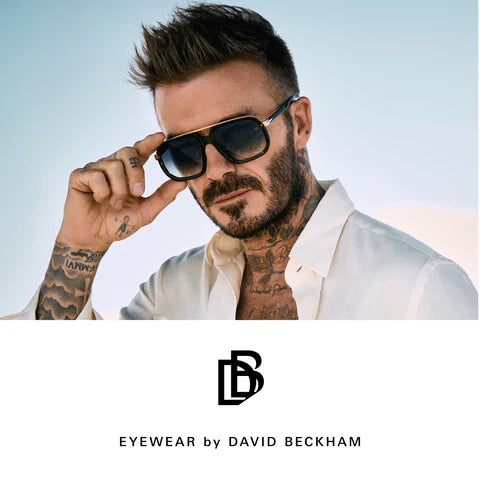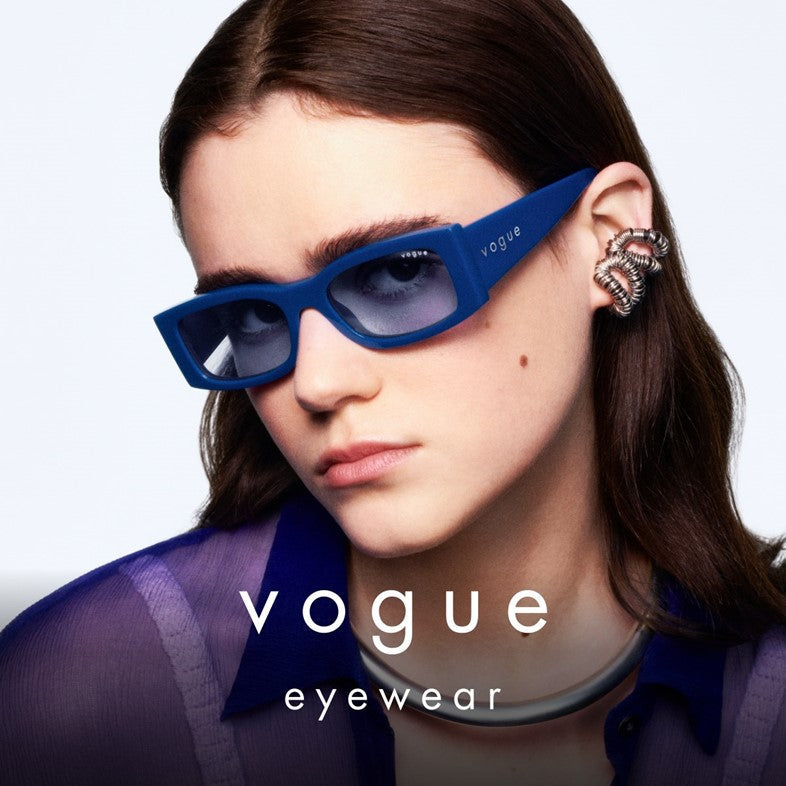
How to Spot Authentic Eyewear: A Comprehensive Guide
Eyewear is more than just a tool for vision correction; it's also a fashion statement and a reflection of personal style. With the increasing popularity of designer eyewear, counterfeit versions have flooded the market, making it crucial for consumers to know how to differentiate between authentic and fake eyewear. Here's a comprehensive guide from Optorium to help you spot authentic eyewear and avoid falling victim to counterfeit products.
1. Check the Brand’s Official Website
The first step in verifying authenticity is to visit the brand’s official website. Authentic eyewear brands often have specific guidelines on how to spot their genuine products. Look for the following:
- Model Number: Legitimate eyewear often includes a model number or code located on the inside of the frame. You can cross-check this code with the brand's official site to confirm the model's authenticity.
- Frame Materials and Features: Established eyewear brands frequently use premium materials like titanium, acetate, and stainless steel, which should feel solid and premium when touched.
By comparing the eyewear’s characteristics with what’s listed online, you can immediately spot discrepancies.
2. Examine the Logo
A key indicator of authenticity lies in the logo. Most eyewear brands are meticulous about their logo placement, font, and design. Here’s what to look for:
- Position: The logo is often located on the temple (the arm of the glasses), near the hinge, or on the nose bridge. It should be neatly printed or engraved, not stickered or cheap-looking.
- Font and Spacing: The lettering of the logo should be crisp, clear, and consistent with the brand’s official logo. Counterfeit eyewear may have poorly printed, uneven fonts, or a misalignment of letters.
- Quality of Engraving: For luxury eyewear brands like Ray-Ban, Gucci, or Prada, the logo is typically engraved rather than printed. Fake eyewear may have low-quality printing that can wear off or feel raised.
3. Inspect the Frame Quality and Material
Genuine eyewear brands use high-quality materials, and this is often the easiest way to spot a fake. Counterfeit versions may cut costs by using cheaper materials.
- Acetate Frames: Genuine acetate frames feel smooth and slightly warm to the touch. Fake acetate frames may feel cold or flimsy.
- Metal Frames: Authentic metal frames are usually made from stainless steel, titanium, or other premium metals. They feel solid and are resistant to rust and tarnishing. Fake metal frames are often lightweight, bend easily, or feel brittle.
- Hinges: High-quality eyewear has solid, durable hinges that open and close smoothly. Look for hinges that are reinforced and match the overall quality of the frame. A flimsy hinge is often a sign of a counterfeit.
4. Check for Certification Markings
Most authentic eyewear, especially those with prescription lenses, comes with certification markings. These include:
- CE Mark: For eyewear sold in Europe, the CE mark indicates that the product meets European health and safety standards.
- ANSI Mark: In the U.S., eyewear that complies with the American National Standards Institute (ANSI) will often have this mark.
- Prescription Lenses: If the eyewear is prescription, it should have markings indicating the type of lenses, such as the material, UV protection, and thickness.
5. Examine the Packaging
Authentic eyewear typically comes with high-quality packaging that includes:
- Case: Genuine eyewear comes with a protective case that often features the brand’s logo and high-quality craftsmanship. The case should feel sturdy and luxurious, not flimsy or cheaply made.
- Cloth: An authentic pair will often come with a cleaning cloth that is branded and made from microfiber or a similar material to clean your lenses without scratching them.
- Paperwork: Many premium eyewear brands include documentation, such as authenticity cards, warranty information, and care instructions. Counterfeit eyewear often skips this step or provides low-quality documents that are hard to read.
6. Price Point
Authentic eyewear is an investment, and its price usually reflects that. While there may be occasional sales or discounts, beware of eyewear being sold at significantly reduced prices, especially from unofficial sources. Authentic designer eyewear will rarely, if ever, be available at steep discounts.
If a deal seems too good to be true, it probably is.
7. Test the Fit and Comfort
Authentic eyewear brands pride themselves on comfort and proper fit. Designer eyewear should sit comfortably on your face, with well-designed temple arms that do not pinch your ears or slide off easily.
- Adjustability: Most high-end brands offer adjustable nose pads and temples that allow the glasses to fit snugly. Fake eyewear may not have these features or they may be poorly designed, causing discomfort.
8. Verify the Seller
If you're purchasing eyewear online or in a store, ensure that the retailer is authorized by the eyewear brand. Many counterfeits are sold through third-party sellers or dubious marketplaces. Here’s how to verify the authenticity of the seller:
- Official Brand Stores: Purchase from the brand’s official website or an authorized retailer.
- Reputable Online Marketplaces: Stick to well-known platforms like Amazon, Neiman Marcus, or Sunglass Hut, where brand authenticity is guaranteed.
- Third-Party Sellers: Research the seller before buying. Look for customer reviews, ratings, and any signs of a reliable reputation.
9. Look for Serial Numbers and Additional Labels
Some eyewear brands add serial numbers to their frames or lenses, especially for limited-edition collections. These serial numbers are unique identifiers that allow you to trace the authenticity of the product. Look for these numbers in discreet spots like the inner temple or under the nose bridge. You can cross-check these numbers with the brand to verify authenticity.
Conclusion
With counterfeit eyewear becoming more sophisticated, it's essential to be vigilant when purchasing glasses. We at OPTORIUM go through an stringent checking proceses of all the products received from our suppliers. At the same time educating our customers to be aware and alert is extremely important to us. By checking for key details such as logos, materials, packaging, certification marks, and the overall quality of the eyewear, you can easily spot genuine products and avoid counterfeit knock-offs. Remember to buy from authorized sellers and always trust your instincts if something feels off. When in doubt, don’t hesitate to ask for a certificate of authenticity, and take the time to do your research before making a purchase.
Investing in authentic eyewear ensures that you're not only getting a high-quality product but also supporting the craftsmanship and reputation of trusted eyewear brands and protecting your eyes.



